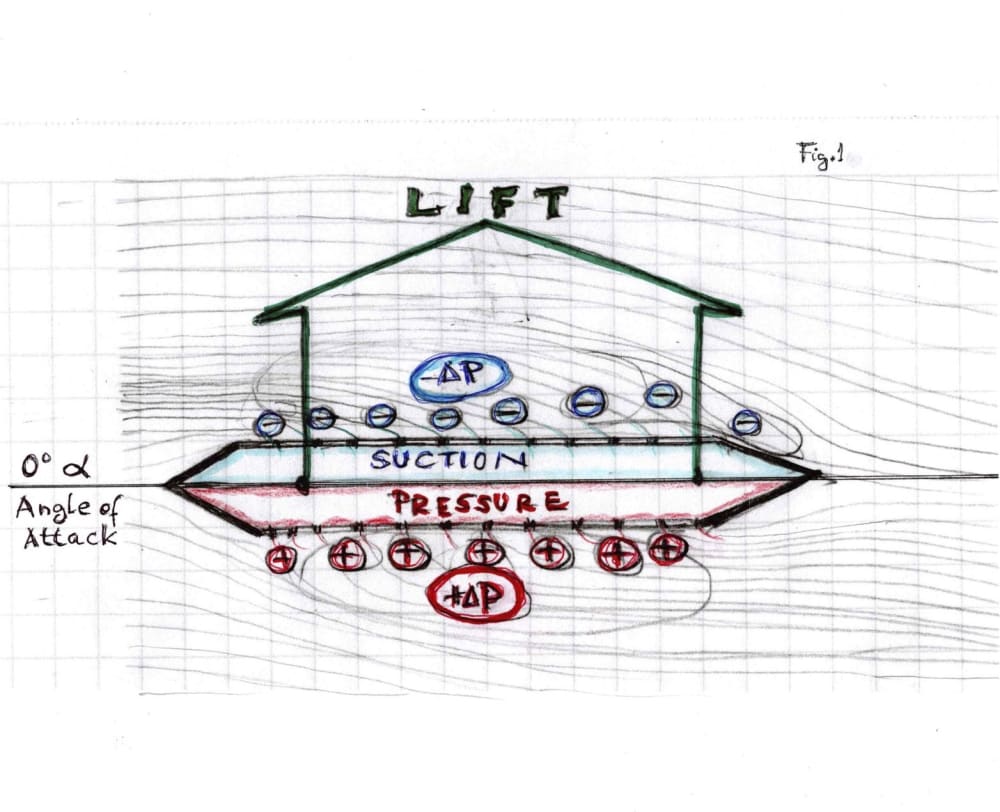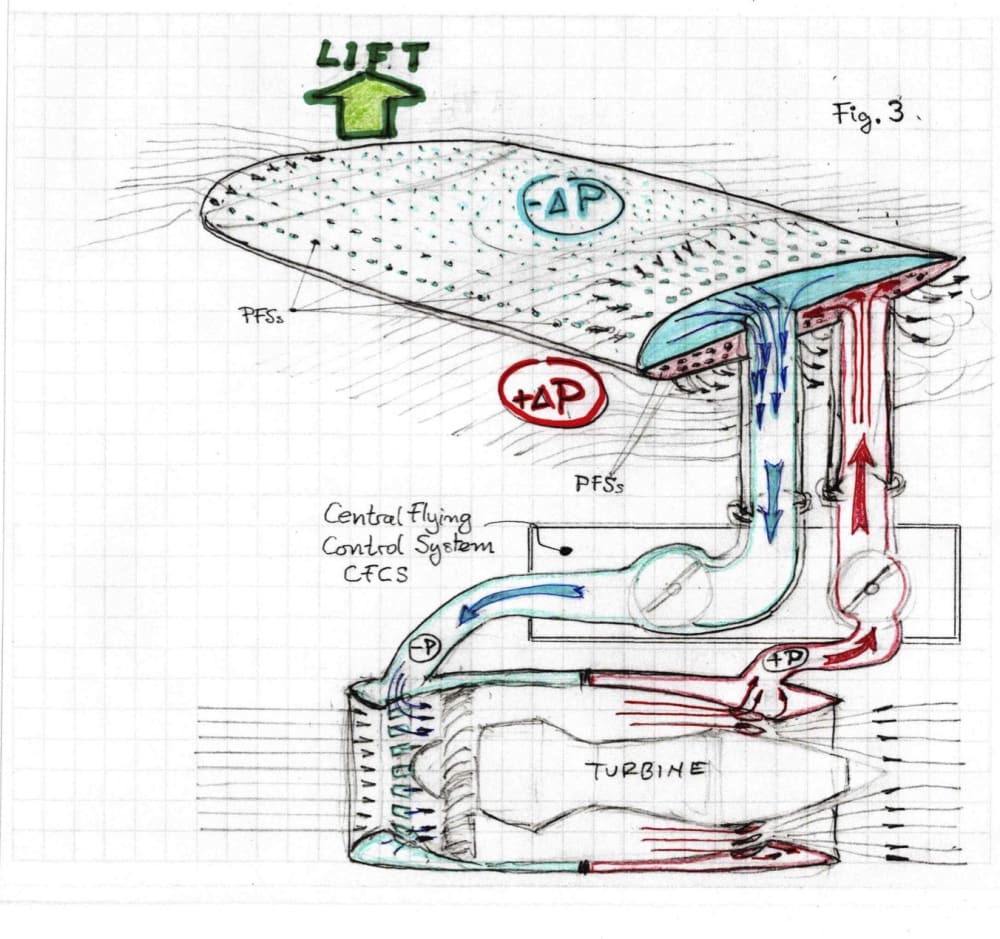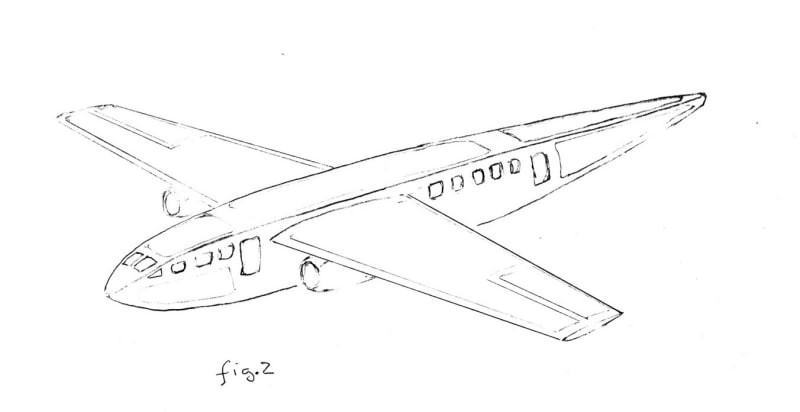WHAT IS IT?
LIFT-VECTORING is a comprehensive system that utilizes thrust, to move an aircraft, to create lift, and act as a complete flight control system without moving surfaces.
WHAT DOES IT DO?
The LIFT-VECTORING system utilizes a portion of the thrust generated by the propulsion system of an aircraft, applied directly to the aerodynamic surfaces, with the purpose of generating and controlling the lift and the attitude, eliminating all moving control surfaces, and the need for sophisticated airfoil shapes, making it significantly less complicated and inherently more aerodynamic, light, and reliable. The LIFT-VECTORING renders the concept of “angle of attack ” obsolete.
WHAT PROBLEMS DOES IT SOLVE?
The way airplanes fly has not changed much since the Wright brothers. For an airplane to fly, it needs a strong source of thrust to move at a relatively high speed, and at extremely specific angles. The combination of air speed, the shape of the wings and a narrow set of angles of attack is what generates the necessary aerodynamic forces to make it fly. This traditional approach wastes too much energy generating the thrust needed to accelerate the airplane just to create “relative wind” around its’ wings. Flying in this way requires excessive speed, energy, precision of angles, and shapes.
HOW DOES IT WORK?
The LIFT-VECTORING system intentionally manipulates differential pressure patterns on specific areas of the aircraft by applying positive pressure on any surface, while at the same time applying negative pressure on the opposite side. Figure 1.
The LIFT-VECTORING system does not depend on the shape or profile of the airfoil, but on the differential pressure forces generated directly on its surfaces. It achieves this by proactively generating and controlling the forces around the surfaces of the airplane (wings, tail and even the fuselage). Figure 2.
The LIFT-VECTORING system uses a portion of the accelerated air flow created by the propulsion system to generate thrust (turbofan, turbojet, etc.) and apply it through injectors placed on one of the sides of any surface and suctioning it from the opposite side of said surface.
Instead of modifying the shape and surface area of a wing to change its operating characteristics in flight, the LIFT-VECTORING system proactively creates a differential pressure which controls the dynamic forces around the wings, without changing the shape nor adding any mechanical devices such as flaps, slats, spoilers, ailerons, rudder, elevators, etc. A Central Flying Control System (CFCS) will direct and command airflow as positive and negative pressure coming from the propulsion system and duct it to the Outer Pressure Chambers.
The outer skin of these chambers has evenly distributed nozzles called Pressure Flow Actuators (PFA), strategically located on both sides of any wing or surface of the fixed-wing aircraft. These PFA are the Pressure Vectors that actively generate the pressure forces (negative or positive) to control lift, and/or flight control surfaces, exactly where desired and needed. Figure 3.
Like this entry?
-
About the Entrant
- Name:Bernardo Amenabar
- Type of entry:individual
- Software used for this entry:N/A
- Patent status:pending








